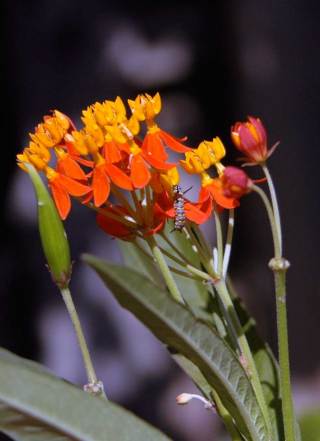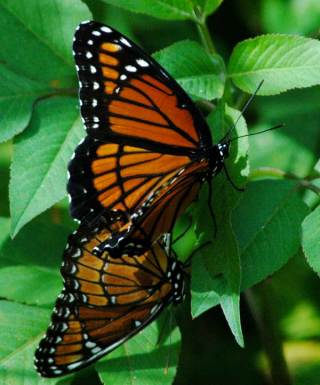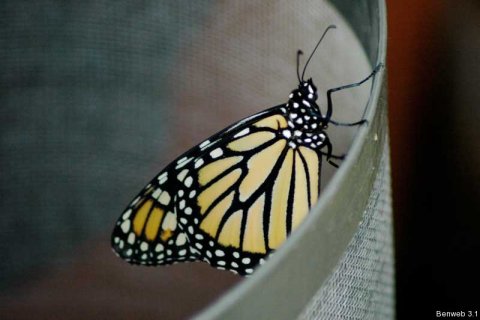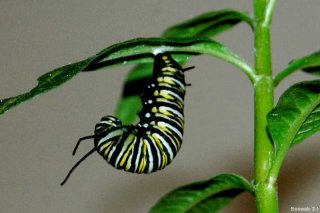It’s late October, and in South Florida that means it’s going to be either windy, or hot, or both. Today we’ve got a bit of both: a steady 7–8 mph east wind, with gusts up to 14 mph, and a temperature of 83°F. Mercifully, the humidity is relatively low (under 60%), so the heat index isn’t really an issue, but it sure feels hot after the traditional pre-Halloween cool spell we had last weekend. (And for some reason, the weather is never nice on Halloween day.)
When the weather’s this hot and the breeze is blowing, it gets harder and harder to get outside looking for things to take pictures of (nothing makes for blurry pictures like an unanticipated gust of wind through the field!). But I went outside anyway, because I had a few things I wanted to investigate.
One of these is in the back yard, where we have one spindly stalk of milkweed (Asclepia curassavica) growing up near one of our beauty berries (Callicarpa americana). For weeks now I’ve been seeing milkweed butterflies, mostly Queens (Danaus gillipus) visiting that plant and nectaring and hovering as if considering laying eggs. But I’ve never seen an egg on it. Today, though, I decided to investigate yet again, and I’m glad I did. I may have missed the egg, but I did find a relatively early instar queen larva up in the flower head:
These cousins of the monarch butterfly (D. plexippus) look very similar to that familiar long-distance migrant, both in the larval and adult stages. And since as larvae they eat the same poisonous plants as well (milkweeds), these species serve as partners in a vast Muellerian mimic complex. (Muellerian mimicry is where distasteful species resemble each other so that predators learn to avoid all members of the complex after a distasteful encounter with one of them.) These butterflies, along with other milkweed-eating Danaus species like the Soldier butterfly (Danaus eresimus) and an unrelated willow-feeding species, the Viceroy (Basilarchia archippus), all benefit from their similar appearance.
Honestly, though, the larvae of the four species are rather dissimilar, except for the queen and monarch larvae, but the adult forms are confusingly similar both to beginning butterfly-watchers and to the insect’s predators (birds, lizards, etc.). And, since all members of the complex taste bad (these are not Batesian mimics, where tasty species masquerade as yucky ones), their survival is enhanced by their convergent coloration.
To get an idea of how similar these butterflies are, here’s a Viceroy pair I saw at Fern Forest back in 2007:
note how the orange and black aposematic (warning) coloration is very similar to that of the familiar Monarch:
If you look closely at the monarch and queen larvae, you can see that there is one “easy” way to distinguish the two: Monarchs (below) have two pairs of fleshy filaments, one fore and one aft, while Queens (see first picture, above) have a third pair amidships:
So if you’re wondering which milkweed caterpillar you’ve got, count the “antennae” (they’re not antennae, but they do appear to be sensory apparatus) and you’ll have your answer!
At the beginning, I mentioned that I had a few things I wanted to investigate; more on that in a later post. Enjoy!




